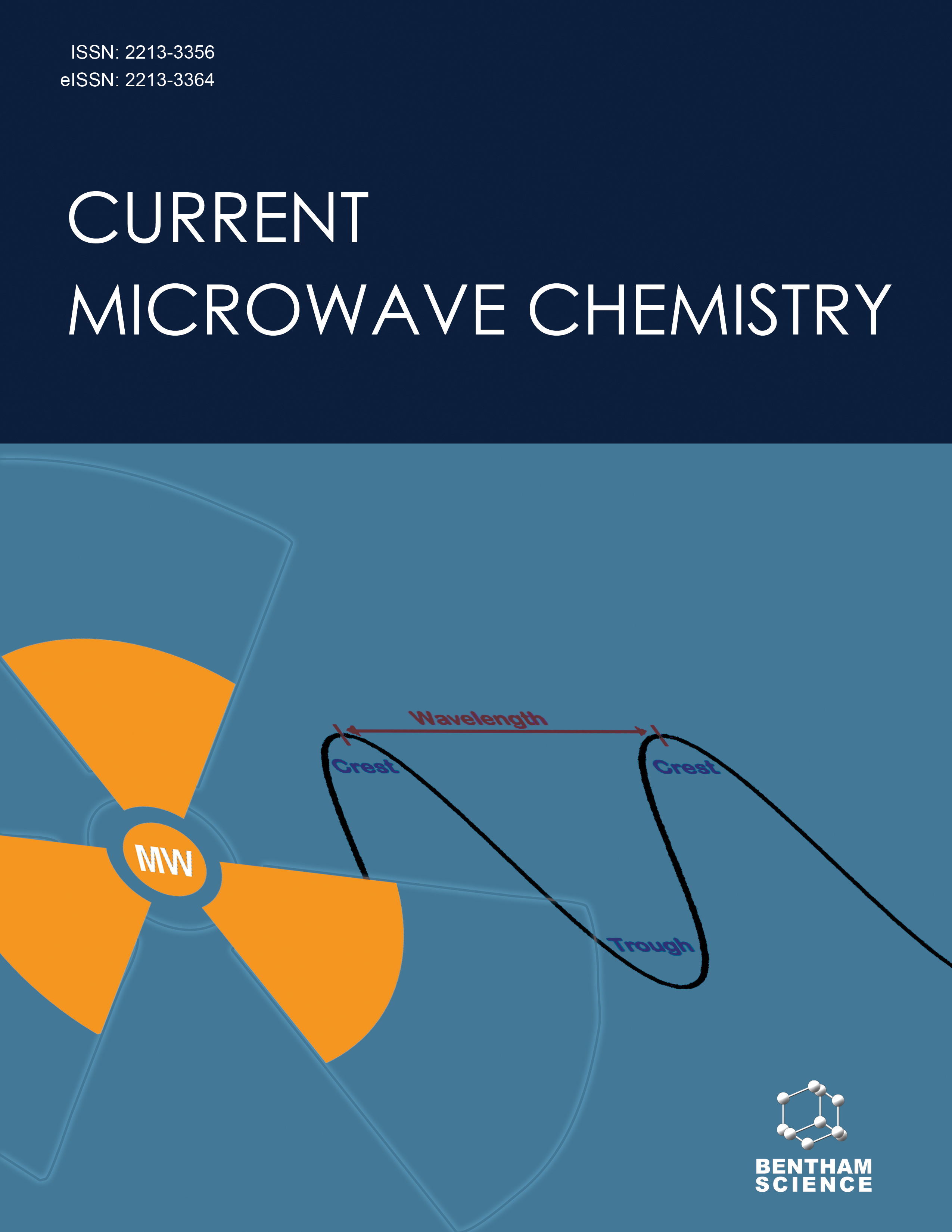- Home
- A-Z Publications
- Current Microwave Chemistry
- Issue Home
Current Microwave Chemistry - Current Issue
Volume 11, Issue 2, 2024
-
-
A Decade of Advancement in Ruthenium (II)-Catalyzed Direct C-H Activation and Consequent C-C/C-N Bond Formation Using Microwave Heating
More LessBy Nazia KausarTransition-metal catalysed activation of unreactive C-H bonds and subsequent C-C bond formation has emerged as a principal and essential tool in the field of synthetic organic chemistry. On the other hand, the microwave heating technique has been intensively used to carry out organic transformation of almost all kinds and has become a promising non-conventional technique for performing synthetic reactions. Direct C- Read More
-
-
-
Green Synthesis of Thiazoles and Thiadiazoles having Anticancer Activities under Microwave Irradiation
More LessAuthors: Sasadhar Majhi, Piyali Mitra and Pankaj Kumar MondalSulfur and nitrogen-containing heterocycles have received a great deal of attention due to their unique structures and therapeutic relevance. Thiazoles and thiadiazoles are important five-membered heterocycles containing sulfur and nitrogen atoms that draw the special attention of researchers due to their synthetic diversity and potent pharmacological properties. Thiazoles and thiadiazoles are used in agrochemical Read More
-
-
-
Microwave Revolution: Transforming Biomedical Synthesis for Tissue Engineering Advancements
More LessMicrowave-Assisted Synthesis (MAS) has emerged as a groundbreaking technique revolutionizing the field of biomedical and tissue engineering. This review aims to explore the fundamental principles, techniques, and applications of MAS in these domains. Beginning with an overview highlighting its significance, we delve into the basic principles, mechanisms, and comparative analysis with conventional methods. Subse Read More
-
-
-
Microwave Thermal Treatment for the Recovery of Re in Copper and Molybdenum Concentrates
More LessAuthors: Vanesa Bazan, Ariel Maratta, Gastón Villafañe, Pablo Pacheco and Elena BrandalezeBackground Rhenium (Re) is obtained as a by-product during the extraction of copper and molybdenum ores. In current extractive metallurgy, Re extraction involves a heat treatment that causes Re losses by volatilization and release of toxic gases into the environment. Objective This research proposes a novel microwave heat treatment (MWHT) to enhance Re extraction avoiding Re losses and toxic gas release into the environ Read More
-
Most Read This Month Most Read RSS feed
Article
content/journals/cmic
Journal
10
5
false
en


